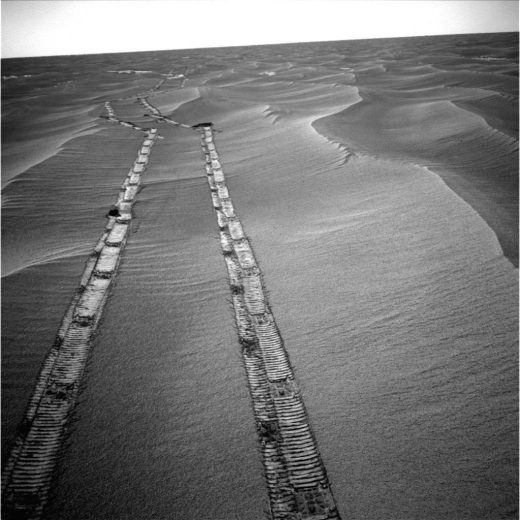Following its departure from the ISS last week, a Northrop-Grumman Cygnus cargo vessel has deployed three CubeSats, including MySat-1, which was built by students in the UAE, and KickSat-2, which originated with a Cornell university program led by Zac Manchester and involved a Kickstarter campaign with contributors assigned to one of hundred tiny “Sprite” chipsats to be released from the “mothership”.
NanoRacks arranged for the deployments and has posted the following release about the program:
NanoRacks Completes Sixth CubeSat Deployment
from Cygnus Spacecraft, Continues Historic Program
February 14, 2019 – Dulles, Virginia – Last night, NanoRacks successfully completed the Company’s sixth CubeSat deployment mission from Northrop Grumman’s Cygnus spacecraft. Cygnus (S.S. John Young) departed the International Space Station on February 8th, 2019 and performed a number of on-orbit activities, including yet another historic NanoRacks deployment.
Cygnus maneuvered to a higher-than-Space Station altitude (445 kilometers) where the NanoRacks External Cygnus Deployment mission released two of the three CubeSats on board into orbit, MySat-1 and the second CHEFSat satellite. The spacecraft then lowered to an altitude of 300 kilometers to deploy KickSat-2.
The deployment of MySat-1 marks an additional historic moment for NanoRacks, being the first payload that NanoRacks has launched and deployed from the United Arab Emirates (UAE). MySat-1 is a joint program from Yahsat, Khalifa University of Science and Technology, and Northrop Grumman, and is the first satellite built at the Yahsat Space Lab in Masdar City, and among the first to be developed by local students.
“We could not be more excited about all of the activity happening in the space industry in the UAE,” says NanoRacks Vice President of Business Development and Strategy, Allen Herbert. “We have a number of groundbreaking programs in the works, and the MySat-1 deployment is the perfect way to kick start NanoRacks activities in the region.”
KickSat-2 was selected for flight by NASA’s CubeSat Launch Initiative (CSLI) and was launched as the sole CubeSat in the Educational Launch of Nanosatellites-16 (ELaNa-16) mission complement, sponsored by the NASA Launch Services Program (LSP).
KickSat-2 was deployed well below the International Space Station altitude due to the satellite sub-deploying smaller “ChipSats,” a prototype representing a disruptive new space technology. These ChipSats, also known as “Sprites,” are tiny spacecraft that include power, sensors, and communication systems on a printed circuit board measuring 3.5 by 3.5 centimeters, with a thickness of just a few millimeters and a mass of just a few grams. The ChipSats are expected to be in orbit for merely a few days before burning up.
“This entire mission is a testament to the flight safety teams in-house at NanoRacks and at NASA’s Johnson Space Center, and the flight operations team at Northrop Grumman,” says NanoRacks External Payloads Manager, Henry Martin. “We were able to shepherd some extremely challenging payloads through the NASA system on a timeline that met the needs of our customers. This required a lot of teams working very closely together, and we’re proud to have yet another successful mission that demonstrates the extended use of cargo vehicles.”
The NanoRacks External Cygnus Program is the first program to have leveraged a commercial resupply vehicle for use beyond the primary cargo delivery to Space Station, demonstrating the future possibilities for using cargo vehicles for the NanoRacks Space Outpost Program and other commercial space station activities. With successful completion of this mission, NanoRacks has deployed 35 satellites from the Cygnus into multiple orbits.
“Thank you again to the teams at NASA and Northrop Grumman for allowing our creativity in orbit to grow with our customers’ dreams,” continues Martin.
To date, NanoRacks has deployed 231 satellites into low-Earth orbit.
For additional updates, follow @NanoRacks on Twitter.
For NanoRacks media inquiries, please email Abby Dickes, adickes@nanoracks.com.
About NanoRacks: NanoRacks LLC, an XO Markets company, is the world’s leading commercial space station company. NanoRacks believes commercial space utilization will enable innovation through in-space manufacturing of pharmaceuticals, fiber optics – and more, allow for transformational Earth observation, and make space a key player in finding the solution to Earth’s problems.
Today, the company offers low-cost, high-quality solutions to the most pressing needs for satellite deployment, basic and educational research, and more –in over 30 nations worldwide. Since 2009, Texas-based NanoRacks has truly created new markets and ushered in a new era of in-space-services, dedicated to making space just another place to do business.
In 2017, the Company announced their long-term plans via the NanoRacks Space Outpost Program. This program is dedicated to the repurposing of the upper stages of launch vehicles in-space and converting these structures into commercial habitats, both humanly and robotically tended, throughout the solar system.
====









